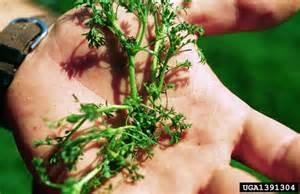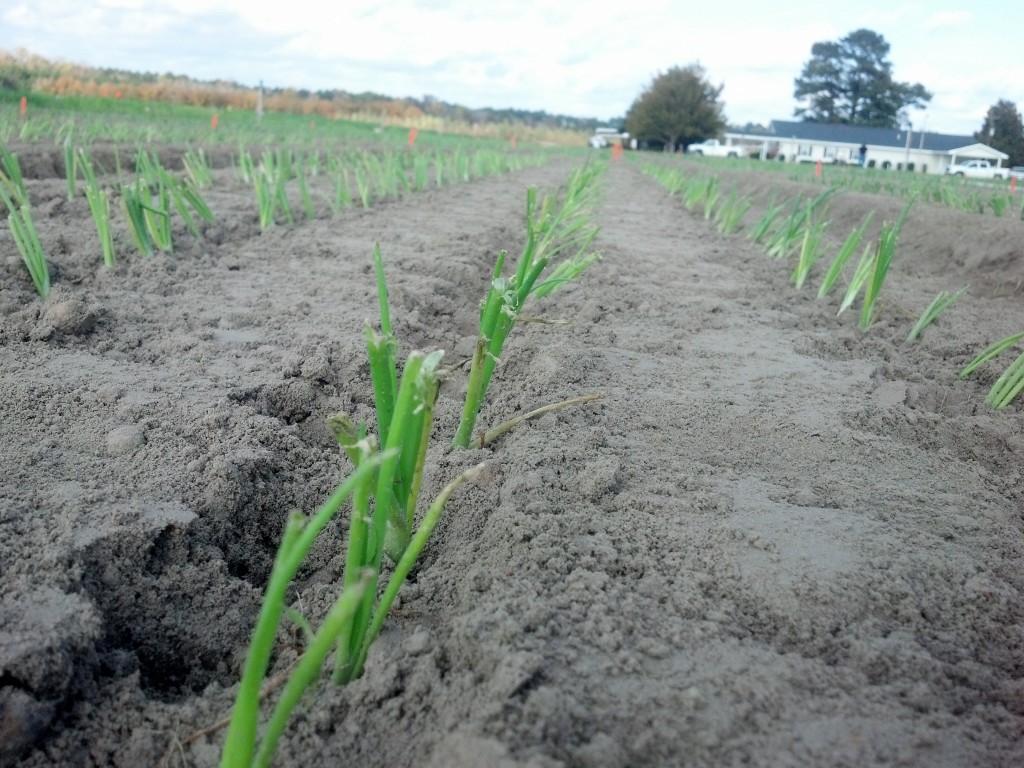During the past year we have received several calls about stickers in home lawns during the Springtime. The cause of these inconvenient stickers that prevent you from walking barefoot in the yard is a weed commonly called Burweed or Spurweed. Burweed is a winter annual weed that germinates during the early Fall months. It grows throughout the Fall and Winter inconspicuously and in the Springtime it forms burs around its seed that are easily found when walking barefoot in the yard. If you have had this problem you know it can be a huge nuisance, but you should know the problem can be avoided.
Burweed can be controlled by application of atrazine herbicide during the Fall and Winter months. A good time to apply atrazine in the yard to control burweed would be around Thanksgiving or early December with a follow up application in late January or early February. The weed will be most susceptible to the herbicide during the the first application when it is small and tender. The second application will help to clean up any weeds that survived. Atrazine will give both pre and post emergent control of burweed, which means that it will help keep the weed from coming up and if the weed is already up then it will take effect against it. A herbicide application of atrazine will also help control several weeds which could potentially be present in yards during in the Fall and Winter including rattlesnake weed, mustards, and chickweed. Atrazine can be used in centipede, St. Augustine, and dormant bermudagrass yards. Make sure to avoid applying atrazine within the root zone of azeleas, camellias, and boxwoods along with other ornamental plants due to injury potential. Make sure to follow label recommendations to avoid injury to surrounding plants.

